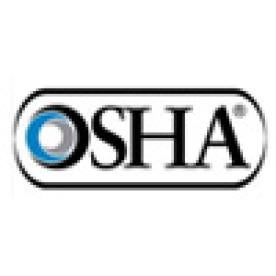OSHA recently issued an internal memorandum outlining enforcement guidance for some of the 2012 Hazard Communication Standard’s (HCS) requirements effective on June 1, 2015—namely, the requirement that chemical manufacturers, importers and distributors must develop and use safety data sheets (SDSs) and labels for their chemical mixtures that align with the UN Globally Harmonized System of Classification and Labelling of Chemicals. The policy provided in the memorandum will not exceed two years.
This memorandum appears to be in response to concerns raised by several trade groups that they needed until June 2017 to comply with the SDS and labeling requirements because they had not received classification and SDS information from upstream suppliers of raw materials in enough time to meet the current deadline. While it denied the trade groups’ petition to formally modify the compliance date, OSHA indicates in the February 9, 2015 memorandum that it will not issue a citation against manufacturers, importer or distributors if they have exercised “reasonable diligence” and “good faith” to classify and label their chemical mixtures in accordance with the 2012 HCS requirements and if the mixture’s material safety data sheets and labels comply with the 1994 HCS requirements.
Whether the manufacturer, importer, or distributor exercised reasonable diligence and good faith will be determined by the compliance officers and their supervisors, after considering a host of factors designed to ensure that they attempted to meet the June 1, 2015 effective date.
For Manufacturers and Distributors
Specifically, if a manufacturer or importer asserts during an OSHA inspection that they are unable to comply with the SDSs and labeling requirements after the June 1, 2015 compliance date, OSHA instructs the compliance officer to determine if the manufacturer and importer has exercised reasonable diligence and good faith in attempting to obtain 2012-compliant SDSs and classification information from their raw supplies. In performing this analysis, the compliance officer is instructed to review the overall efforts, attention and actions made by the manufacturer or importer to comply with the 2012 HCS and consider whether they:
-
Developed and documented the process used to gather the necessary classification information from its upstream suppliers and the status of such efforts;
-
Developed and documented efforts to find hazard information from alternative sources (e.g., chemical registries);
-
Provided a written account of continued dialogue with the upstream suppliers, including dated copies of all relevant written communication with its upstream suppliers;
-
Provided a written account of continued dialogue with its distributors, including dated copies of all relevant written communications with its distributors informing them why it has been unable to comply with HCS 2012; and
-
Developed the course of action it will follow to make the necessary changes to the SDSs and labels.
Under this memorandum, the compliance officer is also required to consider whether the manufacturer and importer attempted to obtain the hazard information in a timeframe that would have enabled them to comply with the June 1, 2015 effective date. Moreover, manufacturers and importers are required to provide a clear timeline for when they anticipate complying with SDSs and labeling requirements before relief will be granted and the decision not to issue a citation is made.
Although the compliance officer must consider all five of the factors mentioned above and the manufacturer’s and importer’s attempt to obtain hazard information in a timely manner, OSHA recognizes, however, that not all of the factors must be met in order for it to find that the manufacturer and importer exercised reasonable diligence and acted in good faith. Any combination of factors, depending on the circumstances, can warrant relief.
The guidance provided in the memorandum makes clear that if manufacturers and importers are unable to meet the June 1, 2015 compliance date, then they must keep a well-developed written record of their attempts to obtain the information to demonstrate their reasonable diligence and good faith to an OSHA compliance officer. One or two attempts to obtain the information only from the upstream supplier likely will not be enough to avoid a citation.
For Distributors
For distributors that are unable to ship 2012-compliant SDSs by December 1, 2015, as required under the standard, because of a manufacturer or importer’s inability to comply with the June 1, 2015 effective date, OSHA instructs compliance officers to consider whether they too exercised reasonable diligence and acted in good faith and have effectively documented their communications with the manufacturers or importers about the reasons for the noncompliance.
It is not clear from the memorandum if the compliance officer will review some of the same five factors provided for the manufacturer’s and importer’s analysis to evaluate a distributor’s reasonable diligence and good faith. However, having a well-documented file of communications with manufacturers and importers attempting to gathering said information will be critical to demonstrate to OSHA that a citation is not warranted.
For Raw Material Suppliers
OSHA notes that upstream raw material suppliers that are not in compliance with the new SDSs and labeling requirements or have not made such information available for downstream manufacturers and product formulators will not be subject to any relief and will be issued a citation for non-compliance.
Extension of Time Frame
The February 9, 2015 memorandum also extends the time frame for when a manufacturer and importer must create 2012-compliant SDSs from three months to six months from the date that it receives all of the hazard information for the ingredients in a mixture. In addition, the memorandum extends the time frame for when the manufacturer and importer must create labels to comply with the 2012 HCS—from six months after learning of new hazard information to six months from the date that they have developed 2012-compliant SDSs.
The memorandum can be found here.




 />i
/>i
